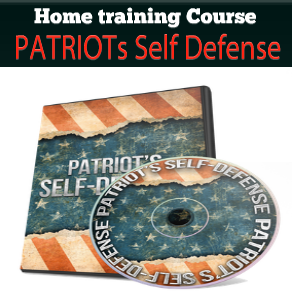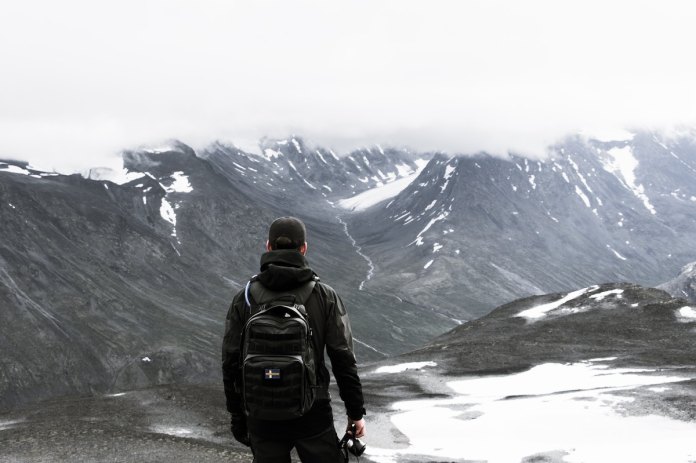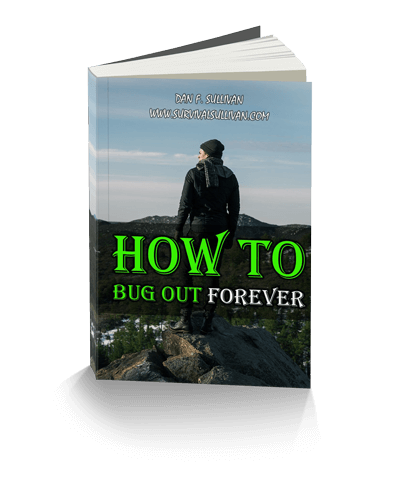The Prepper Journal has many entries that discuss bugging out or hunkering down. This will not be another one. Not exactly, anyway. Let’s imagine you have a emergency plan that involves leaving or staying put. In a perfect world, we are at home with the entire family when the balloon goes up.
But we don’t live in a perfect world.
What is your zombie plan?
We have jobs where we commute an average of 7 to 16 miles with a 27-minute drive time. Natural disasters such as hurricanes give enough time to leave, but earthquakes, tornadoes, and flash floods give little, if any, warning. Let’s not forget that civil unrest, such as the 1992 Los Angeles Riots and the Ferguson Riots, can flare up and spread very quickly.

What are your plans should this regional emergency occur while you are at work? Driving home might be the fastest option, but what if it isn’t? What if traffic, road damage or ‘I forgot to get gas during lunch’ prevent it? You’ll have to walk.
But can you? Aside from the physical element of hiking home, do you have the supplies needed to walk the 3, 6, or 10 miles (or further)? If you don’t have a Bug Out Bag (BOB) in your vehicle already, you should think about creating a Get Me Home Bag (GMHB).

The get me home bag
Here are some things to consider having in your office or vehicle at all times:
- Footwear – for people working in an office setting, this is a big factor. Dress shoes or heels may look nice in the boardroom, but walking home in them will be a nightmare. Do you have any place to store a pair of sturdy sneakers or lightweight hiking boots and a couple of pairs of socks?
- Hydration – For people like me who live in Phoenix, this can be a life-or-death issue. Having to walk home in June could literally kill you during normal times. Imagine trying it during an emergency. If you can get water from your office or other safe location (water bottles?), then you’re off to a good start. You’ll have clean water as well as extra water holders for the journey home. If you don’t, having a 1L water container like a Nalgenebottle will be important.
- Water filter –While it’s likely you won’t need to use an water filter, something like a Lifestraw or small backpacking water filter can mean the difference of potable water or picking up some internal bug. They even make water bottles with integrated Lifestraws.
- Flashlight – While most phones have flashlights, they’re really only good for a very short distance and they drain your emergency communication device. Some flashlights can run on lithium batteries (higher power but short lifespan) or AA-batteries (less powerful, long lasting and easy to find anywhere). Current generation of LED make these very powerful, even on alkaline batteries. I carry a small flashlight with me all the time, much to the amusement of some coworkers.
- Cellphone – Everyone has a cellphone, but do you always have it with you? Are you always charging it, or do you wait until you get in the car for your trip home? You’ll need a way to charge it.
- Portable Power Pack – Cellphones no longer have the 3-5 day battery that some older units did. If you’re away from a regular power source (or the power is down), a small portable power pack will keep your phone going for a long time.
- Knife and Multi-tool – Most multi-tools have an integrated blade, so you might even be able to ditch the folding knife. That said, I prefer a separate knife I can always carry, like the flashlight.
- Maps – Work commutes can get to the point where it’s like being on autopilot. But is that route the best one? The most direct route might not be viable on foot, especially if you have to go through any sketchy areas. A map can help you plan which ways to take, and which to avoid.
- Food, safety and comfort – For a 6-16 mile walk
home, you may not need food. But if it happens at the end of the
workday, you’re likely to be hungry. If you have to hole up for the
night, you’ll be glad you have something to eat.
- Having some snacks or something to eat can be a good morale boost as well as fuel for the journey. You don’t have to have a full MRE, but they’re convenient and keep well. Trail mix, nuts or other calorie-dense foods should suffice.
- Most employers have policies against self-defense tools on property, but you can always leave something like that in your vehicle. Some states like Arizona even have laws permitting employees having firearms in their vehicles while at work. Check you local laws and company policy for details.
- Don’t forget some toilet paper, some first aid (band aids and moleskin) and something to protect against sun and dust (a shemagh works well for these) and a pair of gloves to protect your hands.
The get me home bag
I’m lucky…I work less than 7 miles from home. Pictured below is the kit I have assembled. It’s easily stored in a small drawer at work, or my laptop backpack, which doubles as my get home bag. I happen to have a decent supply of MREs, but I could make my kit smaller by substituting some trail mix and energy bars.

These items can easily be integrated into a larger bug-out bag you may already have, or even be redundant to your BOB. Remember, two is one and one is none when it comes to life-critical supplies. The most expensive thing in that kit was the MSR water filter.
Not pictured are the shoes and extra socks I kept in my desk drawer, nor is my first aid kit (aside from the Israeli pressure bandage)…because it needs to be restocked. I had forgotten I’d used some supplies at work awhile back, and never replenished them.

Writing this wound up being a teaching moment, and a reminder to review your supplies on a regular basis. It’s easy to ‘set it and forget it’, then realize when it’s too late that you’re missing something.
Lesson learned.
Editor’s Note: This came in at a fortuitous time, as it relates to an end-of-year deal I’m trying to put together. Guest contributor Jonas Grumby writes about the “Get Me Home Bag,” which he says is different from the bug-out bag. What say you? Is he onto something?
Source : Wild Bill



